[Editor’s Note: Mad Scientist welcomes back guest bloggers John Wallbank and proclaimed Mad Scientist Dr. James Giordano with today’s post, exploring how to chart our course through the unknown seas of the Post-COVID Future. As stated previously on this blog site by Ian Sullivan, “The COVID-19 pandemic likely will not have system-shattering impacts in the near-to-mid-term. But it will alter the trajectory of the OE.” Messrs. Wallbank and Giordano warn us not to be blinded by the spotlight’s current glare on COVID-19; the current crisis should instead serve as a reminder to redouble our commitments to international stability and strengthen our surveillance measures to thwart future natural and human-induced bio-threats — Enjoy!]
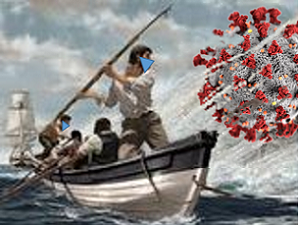
With a nod to Melville for the analogy, it is evident that the COVID crisis presents a whale of a problem to resolve, without such pursuits resulting in the loss of our ship. A multitude of pundits warn of second and third COVID-wave economic damages and renewed constraints on social engagement. But the risk of unintended consequences goes far deeper in what some may view as an Ahabesque quest to return to a post-COVID “normality.” The “new normality” will be different, indeed, and rightly so. There is a white whale – it is the emerging palette of biosecurity benefits, risks, and threats; and like Ahab’s nemesis, it is powerful and lurking, and while surely dangerous, not inherently malevolent. It does, however demand respect for, reflection upon, and insight for the varied nature of risk, threat, and harms. These include both those that are benign in their non-intent (such as a naturally occurring microbes) and those that are intentionally developed, disruptive, and destructive in their non-kinetic and kinetic uses and effects.1
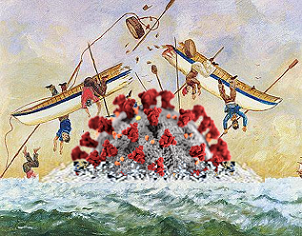
Afloat and awaiting the whale to breach, Ahab invokes his men to look for the signs that portend the surfacing leviathan. Indeed, meaningful risk assessment must also seek, identify, and quantify a number of indicators, some overt, others subtle. Such surveillance requires multidisciplinarity. It recognizes the unavoidable ambiguity and uncertainty at a time of flux and the creative value of recognizing and assessing competition and conflict. It acknowledges, and may accept reasonable risks in light of striving to identify those that are more profound, yet at the same time shines light on all risks, threats, and blind spots. It navigates with and toward end goals of public health, national security, and functional coherence. To do so necessitates the dynamic balance of fostering divergent thinking and directed efforts, so as to engage these approaches in complementarity and concert.
Information analysis, prediction, and biosecurity operations are all important to risk assessment, mitigation, and prevention. But these enterprises are only as good as the data acquired and its proper weighting. This will often demand views and insights that to date have been less than obvious, and may run counter to extant and regnant military doctrine. Risk and threat matrices must  consider, regard, and appropriately incorporate apparent “outliers” that can exert disruptive if not destructive influence that far outweighs their seemingly low probabilities. It may even help to have those who think outside the box play the role of prophets of the possible and potential. Here, we can think of George Orwell and Aldous Huxley, whose storytelling gave rise to concerns about science and technology that might have otherwise blindsided society. This is not to imply that such fiction portends fact. But there is definite value in weaving projective narratives in ways that use novel applications of current tools and methods and the rapid development and use of new ones.
consider, regard, and appropriately incorporate apparent “outliers” that can exert disruptive if not destructive influence that far outweighs their seemingly low probabilities. It may even help to have those who think outside the box play the role of prophets of the possible and potential. Here, we can think of George Orwell and Aldous Huxley, whose storytelling gave rise to concerns about science and technology that might have otherwise blindsided society. This is not to imply that such fiction portends fact. But there is definite value in weaving projective narratives in ways that use novel applications of current tools and methods and the rapid development and use of new ones.
 In this light, we believe artificial intelligence-based generative adversarial networks (GANs) and open-ended discovery algorithms should be utilized to generate probable, possible, and potential risk and threat scenarios that should be recognized and quantified early in their development. Somewhat more mundane, but we posit nevertheless meaningful, is the use of AI to assess scientific validity in programs like SciFact. This would preempt conspiracy theorization, avert bad actors from controlling the narrative, and deflate dangerous stories before disinformation is spawned and disseminated. All other biodata systems likewise should be viewed and addressed for their potential vulnerability.2
In this light, we believe artificial intelligence-based generative adversarial networks (GANs) and open-ended discovery algorithms should be utilized to generate probable, possible, and potential risk and threat scenarios that should be recognized and quantified early in their development. Somewhat more mundane, but we posit nevertheless meaningful, is the use of AI to assess scientific validity in programs like SciFact. This would preempt conspiracy theorization, avert bad actors from controlling the narrative, and deflate dangerous stories before disinformation is spawned and disseminated. All other biodata systems likewise should be viewed and addressed for their potential vulnerability.2
As for active diversion of resources, much has already been stated about surveillance and the safeguards needed for privacy, particularly for contact 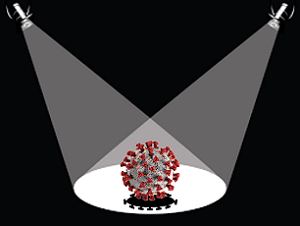 tracing and health care records. The spotlight on COVID-19 is intense and engulfing; so much so, it can blind us to those matters that may fall through the proverbial cracks. Once there, they can fester, and distend a wedge that cleaves a fissure in precarious parts of our biosecurity and socio-economic
tracing and health care records. The spotlight on COVID-19 is intense and engulfing; so much so, it can blind us to those matters that may fall through the proverbial cracks. Once there, they can fester, and distend a wedge that cleaves a fissure in precarious parts of our biosecurity and socio-economic
infrastructure. To re-state Pasternak, it is difficult to see the light when it is blindingly shining in one’s eyes.
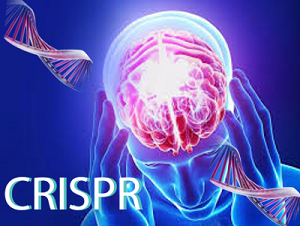 Some techniques used by COVID-19 researchers and vaccine developers can be hijacked for use by bioterrorists, including those using CRISPR to make neuroweapons. Synthetic biology has become so mainstream that biohacking no longer seems outlandish. Such threats have been recognized, and have served as prompts for safe containment protocols, oversight, and (relative) regulation of dual-use biotechnology. Progress in the field is driven by and aimed at benevolent ends (e.g., vaccine development, viral mutability studies, etc.), yet can be re-directed and usurped to induce disruptive effects to advance various groups’ ideals of “the good,” which may, in fact, profoundly harm others. In paraphrasing the philosopher Alasdair MacIntyre’s3 query, we may ask: Whose Good? Which Rationality?
Some techniques used by COVID-19 researchers and vaccine developers can be hijacked for use by bioterrorists, including those using CRISPR to make neuroweapons. Synthetic biology has become so mainstream that biohacking no longer seems outlandish. Such threats have been recognized, and have served as prompts for safe containment protocols, oversight, and (relative) regulation of dual-use biotechnology. Progress in the field is driven by and aimed at benevolent ends (e.g., vaccine development, viral mutability studies, etc.), yet can be re-directed and usurped to induce disruptive effects to advance various groups’ ideals of “the good,” which may, in fact, profoundly harm others. In paraphrasing the philosopher Alasdair MacIntyre’s3 query, we may ask: Whose Good? Which Rationality?
So, what are some recommended actions to identify and mitigate unintended consequences from our efforts to overcome COVID-19? It is important to bear in mind that we are in this together, and thus should strive to overcome partisan divides, maintain mutual regard, and prioritize the common good. Such inclusiveness should also extend beyond national borders, and re-vivify and re-solidify international alliances that are critical for cooperative engagements of global surveillance, oversight, and security.
 We see COVID as an opened fissure in the architectonics of international relations, reliance, and responsibilities. This, and the “new normality” of the post-COVID (or perdurably COVID-affected) future will not be the place for restrictive isolationism. Simply put, we argue that effective biosecurity averts
We see COVID as an opened fissure in the architectonics of international relations, reliance, and responsibilities. This, and the “new normality” of the post-COVID (or perdurably COVID-affected) future will not be the place for restrictive isolationism. Simply put, we argue that effective biosecurity averts  the tripping-hazards and repercussions of insecurity. We needn’t lose the ship in a blinded obsessional pursuit, but rather, must navigate with prudence and forecasts – forearmed toward the horizons of probabilities, possibilities, and potential that lies ahead.
the tripping-hazards and repercussions of insecurity. We needn’t lose the ship in a blinded obsessional pursuit, but rather, must navigate with prudence and forecasts – forearmed toward the horizons of probabilities, possibilities, and potential that lies ahead.
If you enjoyed this post, check out each of the following posts from our Contagion: COVID-19’s impact on the Operational Environment series:
… as well as the following related posts:
-
- The COVID Crisis and Beyond: Systemic Biosecurity Lessons to be Learned about Decoherence, Coherence, and HOPE, by Dr. James Giordano and Mr. John Wallbank
- CRISPR Convergence, by Howard Simkin
- Dead Deer, and Mad Cows, and Humans (?) … Oh My! by LtCol Jennifer Snow, Dr. James Giordano, and Joseph DeFranco
- A New Age of Terror: The Future of CBRN Terrorism, by Mr. Zachary Kallenborn
- “The Convergence” – COVID-19 and the Future of Bio-Security with Dr. Giordano and the associated podcast
About the Authors:
John Wallbank, MA, is founder of Pure Hybrid Media LLC, former counselor, and a social science researcher specializing in cross-fertilized innovation.
James Giordano, PhD, is a proclaimed Mad Scientist and frequent contributor to the Mad Scientist Laboratory. He is a Professor of Neurology and Biochemistry, and Senior Scholar of the Pellegrino Center for Clinical Bioethics at Georgetown University Medical Center, Washington DC, and a Senior Fellow in Biosecurity, Technology, and Ethics at the US Naval War College.
Disclaimer: All views expressed in this post are the authors’ and do not necessarily reflect those of the Department of Defense, Department of the Army, Army Futures Command (AFC), or Training and Doctrine Command (TRADOC).
1 DeFranco JP, DiEuliis D, Bremseth LR, Snow JJ. Giordano J. Emerging technologies for disruptive effects in non-kinetic engagements. HDIAC Currents 6(2): 49-54 (2019).
2 DiEuliis D, Lutes CD, Giordano J. Biodata risks and synthetic biology: A critical juncture. J Bioterrorism Biodef 9(1): 2-14 (2018).
3 MacIntyre, A. Whose Justice? Which Rationality? Notre Dame IN: University of Notre Dame Press, 1988.

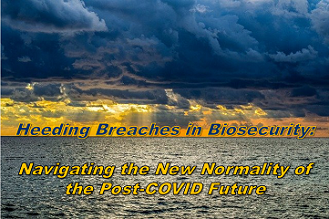


I would like to see holistic and comprehensive impacts both positive and negative of closing down economies, social distancing, wearing masks, hand washing, various new practices put in place because of COVID-19. Not just with a view of COVID-19 impact but secondary and tertiary impacts because of the actions taken. What is the information, data, and statistics revealing about all these radical actions being taking to try and stop a highly contagious pandemic?
Specifically, addressing the following key perspectives:
– Social perspective
– Medical community perspective (Hospitals, Nursing Homes, Other infectious diseases and unintended impacts of actions taken to prevent COVID-19 + and -)
– Public Safety Perspective
– National Defense and National Security Perspective
– Economic perspective
– Education perspective
For example, I would like the medical community to report if there has been a significant reduction in other infections, disease, illness, as a result of the actions taken to prevent the spread of COVID-19. What are the secondary effects of increased hand washing, social distancing, wearing masks, closing public places: bars, churches, schools, work places, anywhere that people congregate and socialize in close proximity.
On a larger scale
A cursory but sound analysis of what might now threaten regarding the Coronavirus in its future manifestations, and whatever risks in our efforts to control human destiny given the new normal we anticipate. There are good guys and bad guys out there thinking about this conundrum all the time.